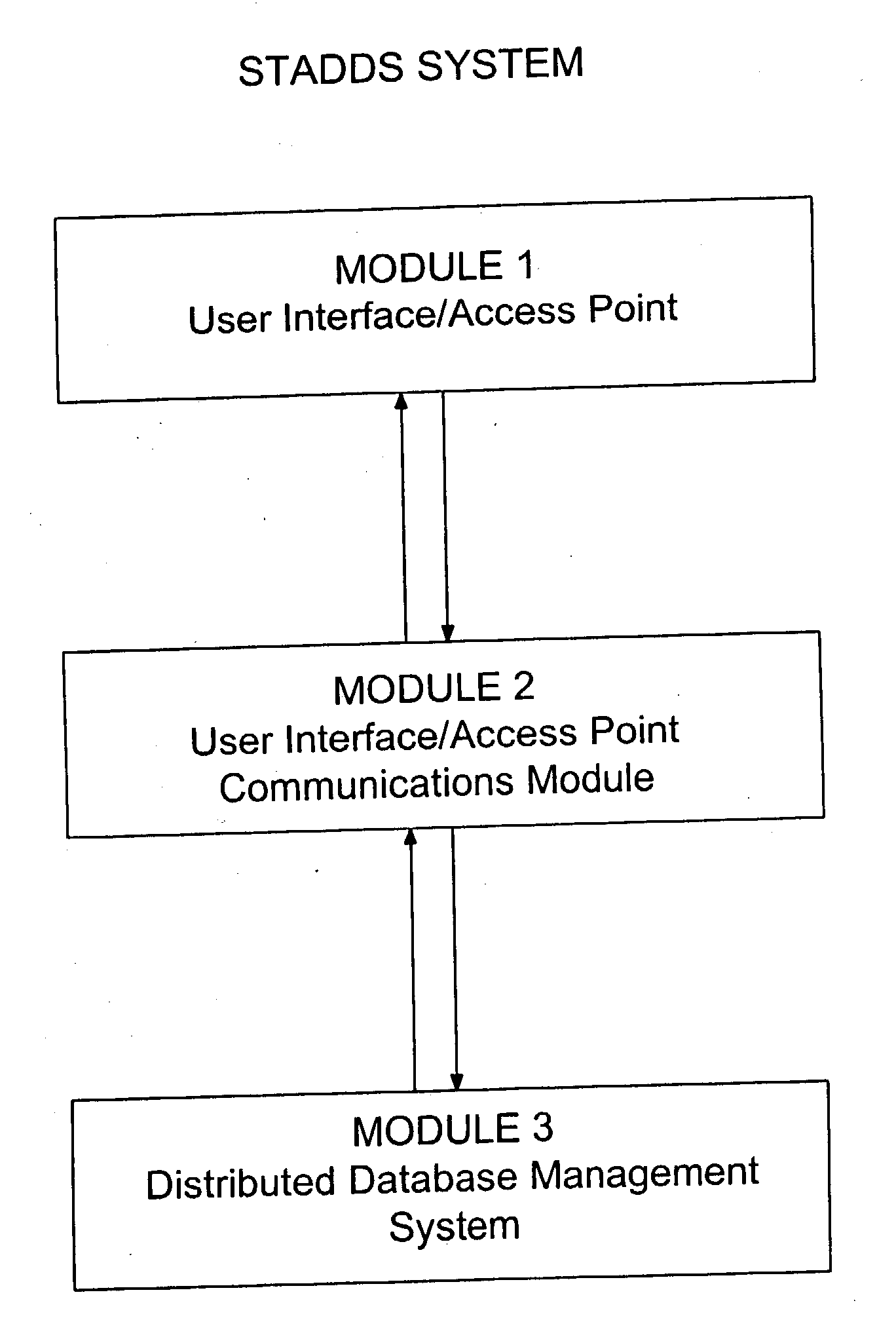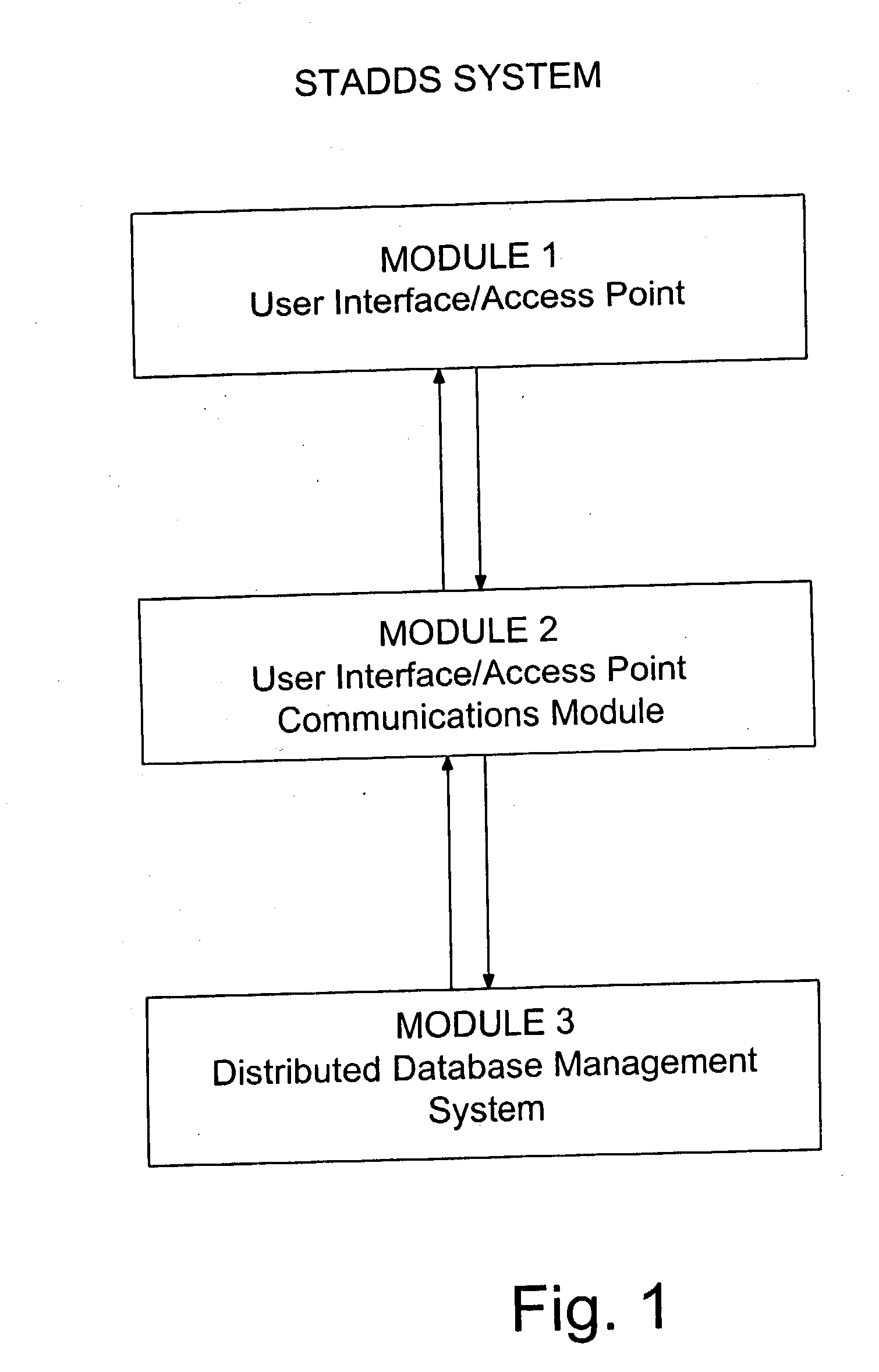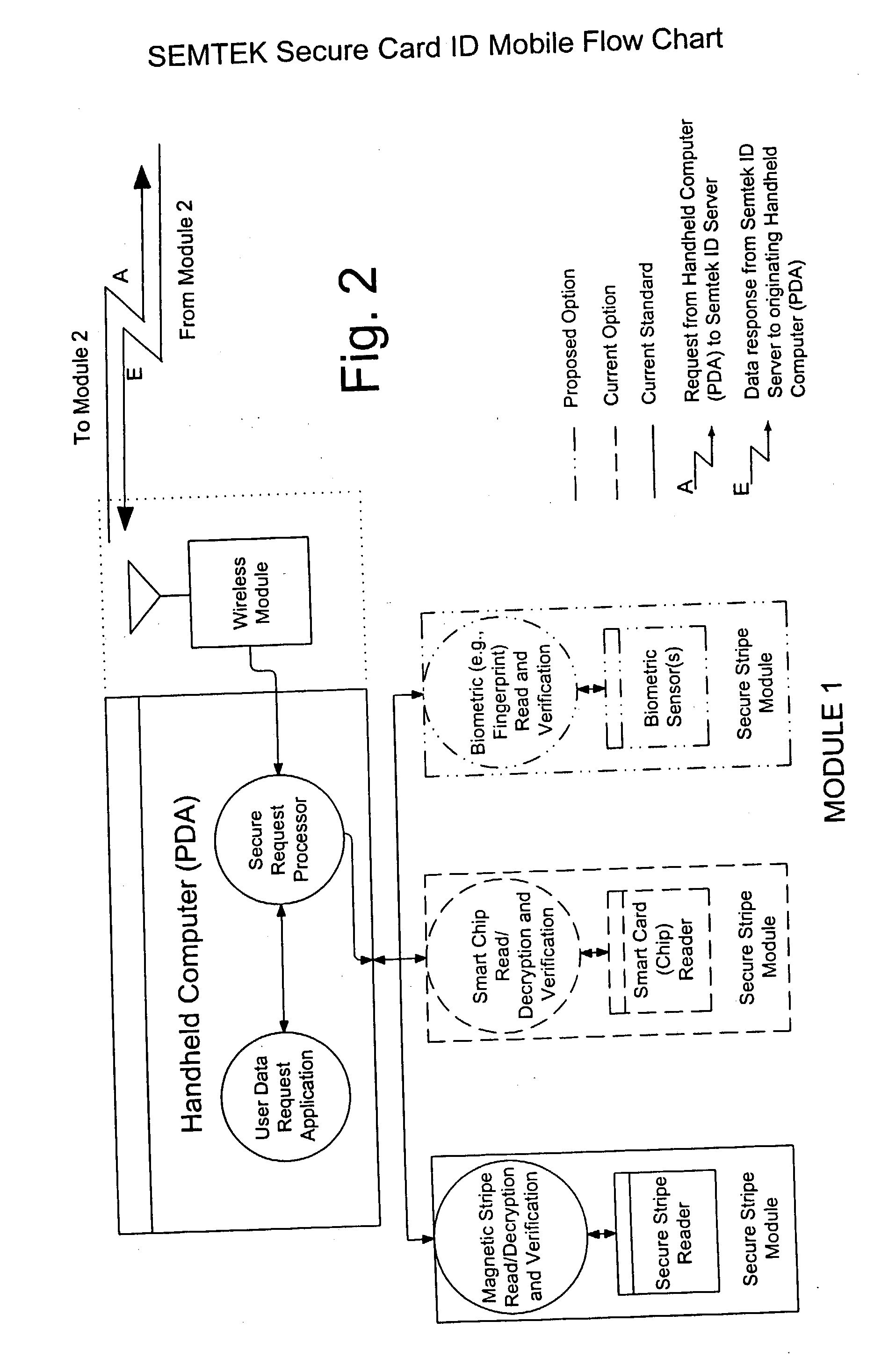Secure token access distributed database system
a distributed database and token access technology, applied in the field of new and improved secure token access distributed database and system, can solve the problems of no current method to access a wide variety of data securely from diverse locations, used in a detrimental fashion to compromise the system, process or data,
- Summary
- Abstract
- Description
- Claims
- Application Information
AI Technical Summary
Problems solved by technology
Method used
Image
Examples
example case 1
[0123] Inbound Cargo Control
[0124] (Customs officer at the border; Security Guard at a secure loading / unloading yard; federal, state or local police patrol officers engaged in a traffic stop)
[0125] A Customs officer at the border may swipe a driver's license (with magnetic strip) through an SS reader for a truck driver transporting a restricted cargo into the country. The SS reader verifies the authenticity of the license, both by internal reference of the media signature and by accessing an SS enabled database maintained by the Customs Service that collects original magnetic signature data for licenses cleared for international transport of restricted cargos. In addition, a request by the Customs DMV software application is sent specifically to known SS enabled databases with potentially relevant data and generally to the "universe" of SS enabled databases.
[0126] The state (indicated on the driver's license) DMV SS database may send a picture of the driver to the customs officer's ...
example case 2a
[0130] Access to a Restricted Building or Area.
[0131] An employee working in a restricted location, swipes his SS badge through an SS reader. The reader verifies that the badge is original and the encoded data is also original. The software application controlling the SS reader makes a request to specific SS enabled databases for any updates regarding this ID or carrier. This information, if any, is retrieved immediately. If a human gatekeeper (guard) is involved, a comparison of the ID carrier, the picture on the badge and a freshly downloaded, current, picture of the original ID carrier might be made. This information may be sufficient to grant entry.
[0132] A general request may also go out to all (or some domain subset) of the SS databases on the network or (through a secure connection) the internet. If subsequent information is retrieved (after entry has been granted) the guard or some other entity may be notified for review. If the information is of a predefined nature, an alar...
example case 2b
[0133] Card Signature Missing or Fails.
[0134] In this scenario, an employee working in a restricted location, swipes his SS badge through an SS reader. The card and employee are, in fact valid, but the reader fails to verify the SS card signature, either because it is missing, is unreadable, or is wrong (magnetically altered in some way). The employee swipes his driver's license, also encoded with an SS signature which is verified through the DMV database, much as in Case 1. The software application controlling the SS reader makes a request to specific SS enabled databases for DMV comparison for this employee and gets verification. As with case 2a, if a human gatekeeper (guard) is involved, additional comparisons can be made. Either the guard, if there is one, or the security application deems that the alternate verification is sufficient to grant entry. In addition, the security database is notified that the employee's badge is defective and needs immediate replacement. All other c...
PUM
 Login to View More
Login to View More Abstract
Description
Claims
Application Information
 Login to View More
Login to View More - R&D
- Intellectual Property
- Life Sciences
- Materials
- Tech Scout
- Unparalleled Data Quality
- Higher Quality Content
- 60% Fewer Hallucinations
Browse by: Latest US Patents, China's latest patents, Technical Efficacy Thesaurus, Application Domain, Technology Topic, Popular Technical Reports.
© 2025 PatSnap. All rights reserved.Legal|Privacy policy|Modern Slavery Act Transparency Statement|Sitemap|About US| Contact US: help@patsnap.com



